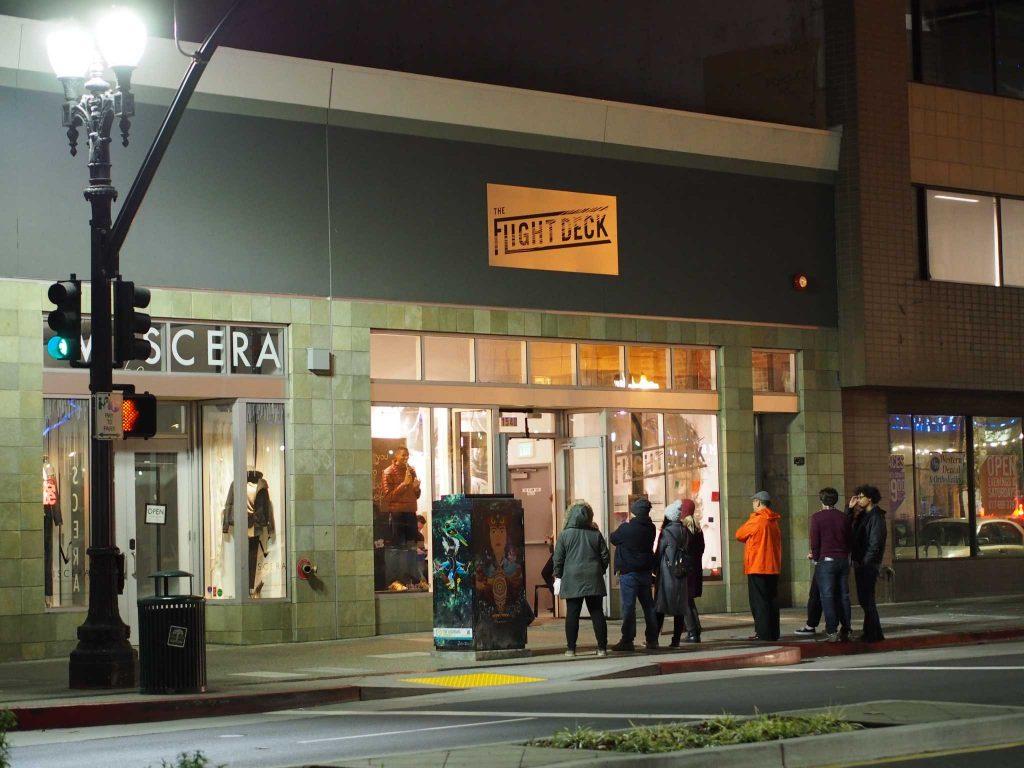Personal moments and intriguing faces were displayed along the walls of the student-built art exhibit “Potential,” which was held at popular Oakland art venue The Flight Deck, on the first Friday of the year. Through black and white photography, live performances and interactive artist-to-audience conversation, the idea of structural violence evolved into a space of awareness regarding what limits children’s potential today.
SF State and UC Berkeley students Julius Rea, Jesse Sutterley and Katy Hada teamed up to create the exhibit in hopes of spreading a message and initiating change.
“Structural violence refers to any social or political system that reduces one’s ability to reach their full potential,” said Rea, an SF State philosophy major.
Rea continued to explain that structural violence occurs when a person’s education, economic and financial opportunities are limited when they are born in lower income areas, which almost instantly reduce “their potential as a human being.”
“We tried to figure out how to talk about that idea in a more universal and familiar way,” Rea said. “It started from the idea to talk about structural violence, but then it became an intimate discussion with families on how to raise their children.”
The exhibit included black and white photography of four different families willing to tell their stories. Hada, an English major at UC Berkeley, interviewed each family member to include an article beside their photographs further explaining their personal experiences in a structurally violent social and political system.
“For (the families) it was a huge trust exercise because they had absolutely no idea what questions we were going to ask,” Hada said. “It turned out to be the most amazing experience of the whole process because (everyone) had phenomenal answers. Answers you’d expect to get by knowing them for years and years.”
Along with the photography, the exhibit included rotating performers eager to tell their stories to others. Volunteer audience members, spoken word artists and others were among those that hopped on the “soap box,” or small stage, in the gallery.
Aside from the concept and articles, the creative trio did every other aspect of the exhibit themselves as well, including building the set and taking photographs.
“I did all of the photography for the exhibit,” said Sutterley, who is also a student at SF State. “Julius and I used the idea of making journalism art. Not just a magazine or an article, but an interactive conversation.”

“It’s a huge collaboration,” Hada added.
As for a solution to the rising paramount issue of structural violence, the group wants their art to lead people to their own answers, hoping the personal touch of faces with stories will spark change.
“We don’t have the answer,” Hada said. “We wanted to ask the general populous to help us and ask what do they think. We want to make it a conversation.”
The conversation will continue February 3, during the gallery’s closing event from 5-11 p.m. The group says they hope the conversation doesn’t stop with just their exhibit, and continues through their audience and passersby.
“It’s one of those existential crises that are coming up right now because of everything going on in the world, and the three of us started thinking: What’s going on? What do we do? How do we come together and talk about it?” Hada said.
The passion these creative artists have for the issue of structural violence is clear, and they urge anyone who can attend to come and see their gallery on its final evening, with champagne, free food and more live performances as an incentive.
“It was important for us to have that discussion with the families and show parents, the performers and the participants how we talk to a child about themselves,” Rea added. “We’re honing in on the relationship between parent and child.”








